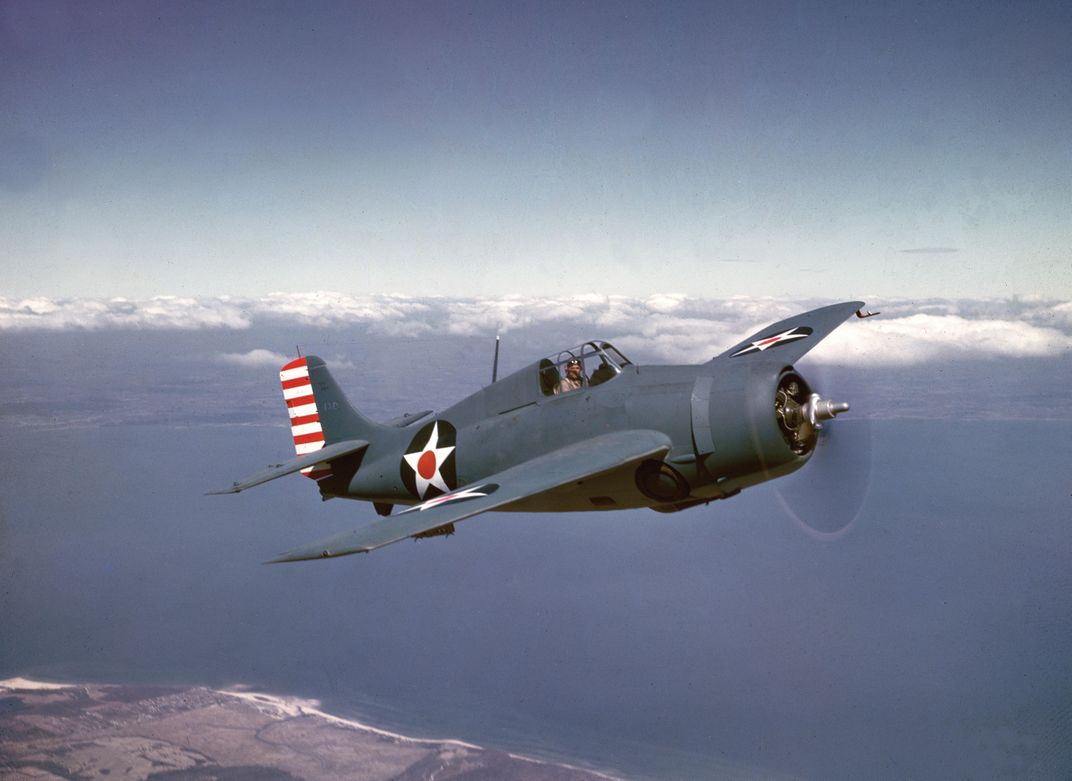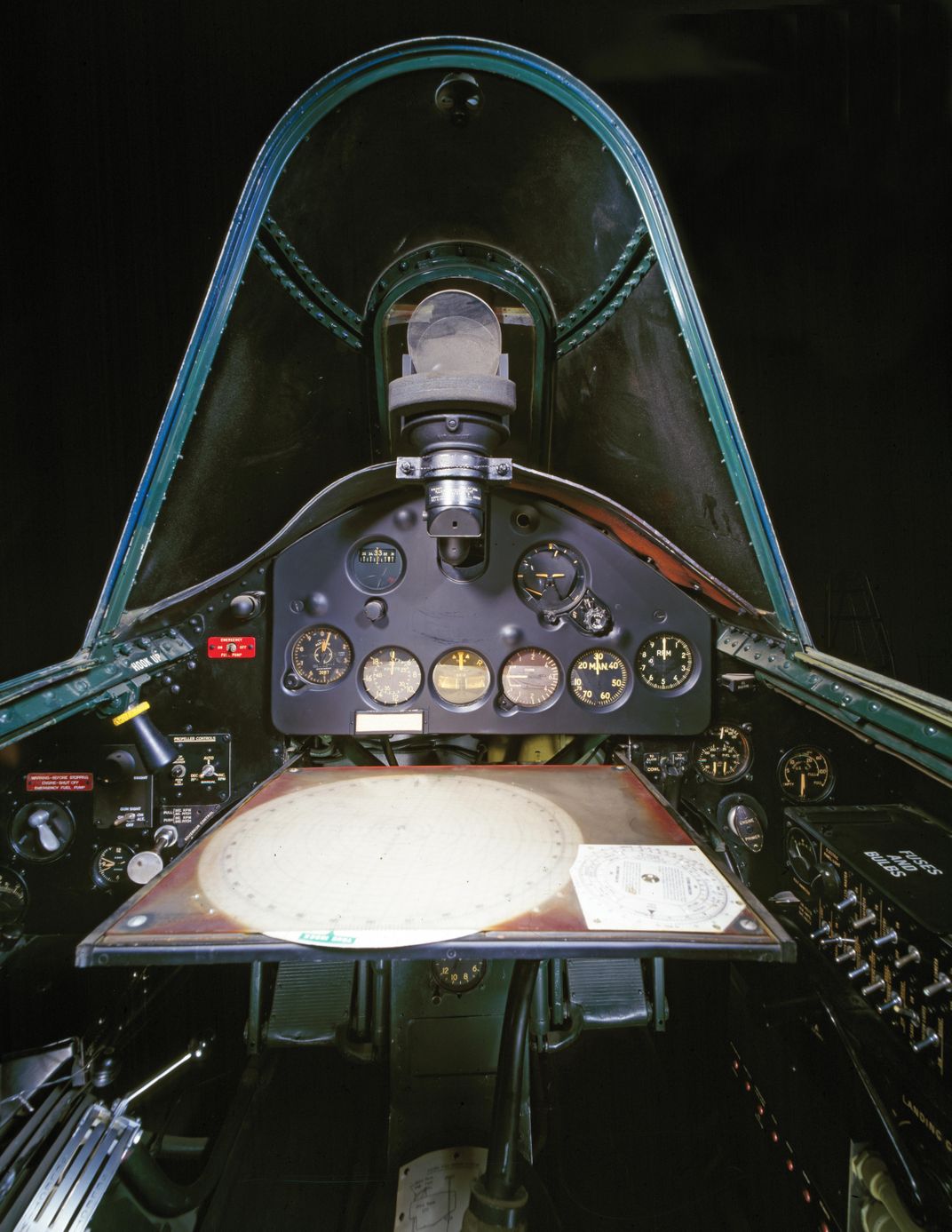The “Hit and Git” Fighter
How the Grumman F4F Wildcat survived.
/https://tf-cmsv2-smithsonianmag-media.s3.amazonaws.com/filer/7d/69/7d695561-8640-4c30-a6c0-69c082a94253/16a_sep2017_t8a0951_live.jpg)
It was impossible to out-Zero the Zero.
The nimble Mitsubishi A6M fighter, pride of the Imperial Japanese Navy, was superior to Allied aircraft in speed and maneuverability. In rejecting both self-sealing fuel tanks and armor protection for the pilot—necessities for aircraft built in the United States—the Japanese had created a fighter that weighed significantly less than the Allied counterparts. (It wasn’t until late 1943 that pilot armor, bulletproof glass, and self-sealing tanks were standard on Japanese aircraft.)
But Leroy Grumman proved that survivability could be more valuable than maneuverability. When the Grumman F4F Wildcat entered service in 1940, no one would have predicted that by the end of World War II it would have an air combat kill-to-loss ratio of 6.9:1. Though the Wildcat was slower than the Zero, the rugged aircraft could take a tremendous amount of damage and keep flying. Its sluggishness required Wildcat pilots to develop tactics based on a strategy of “hit and git,” as pilots called it.
In response to a 1935 Bureau of Aeronautics request for a new carrier fighter, Grumman proposed a biplane, the XF4F-1. It made sense; a biplane’s shorter wings enabled more aircraft to fit on a carrier’s deck. In early 1936, the Navy awarded contracts to Grumman for the XF4F-1, and to Brewster Aeronautical for its F2A Buffalo monoplane. But just four months later, the Navy canceled the XF4F-1 contract, having recognized the superiority of the monoplane. A new contract was issued to Grumman, for a monoplane—the XF4F-2. It made its first flight 80 years ago this month, on September 2, 1937.
Although the Brewster XF2A won the competition, Grumman continued to improve its design. When the Brewster Buffalo’s problems became evident—overheating engines and landing gear failures—Grumman was ready with its redesign, and the XF4F-3 was ordered into production. The F4F‑4, the first Wildcat to feature folding wings, soon followed. By 1942, every U.S. Navy fighter squadron would be flying the F4F.
The fighter proved its worth immediately, at the Battle of Wake Island. A dozen F4F-3s had been delivered by aircraft carrier to Marine Corps squadron VMF-211 just four days before the attack on Pearl Harbor. On December 8, 1941 (Wake being on the opposite side of the International Date Line), Mitsubishi G3M bombers destroyed seven of the eight F4Fs on the airfield. The remaining aircraft were crucial to the Marines’ defense of the island, even sinking the Kisaragi, a Japanese destroyer.
To keep a four-plane combat patrol aloft, mechanics had to cannibalize the damaged airframes. “Parts and assemblies have been traded back and forth so that no airplane can be identified,” noted an operations report. “Engines have been traded from plane to plane, have been junked, stripped, rebuilt, and all but created.”

On December 22, 14 days into the assault, the last two airworthy Wildcats lifted off the beleaguered island into a gray sky. They were going into battle against 39 Japanese aircraft. It took six Zeros to shoot down Lieutenant Carl Davidson. Captain Herbert Frueler took down two Nakajima B5N bombers before crash-landing on Wake. The next day, the island fell to the Japanese.
Wildcat pilots were a scrappy bunch. F4F fliers won more Medals of Honor than any other fighter pilots in World War II. Of the eight medals, six went to Marines fighting in the Solomon Islands campaign in 1942‑1943.
Navy and Marine Corps squadrons flew the Wildcat in combat for just 20 months, from December 1941 to August 1943. As the F6F Hellcat arrived in theater, F4Fs were moved to escort-carrier service, providing close air support to ground forces and patrolling for enemy submarines. In 1943, Grumman handed over production of the F4F to the General Motors plant in New Jersey; the aircraft made there were designated the FM-1 and FM-2. In the end, General Motors would produce 5,280 of the 7,860 Wildcats built.
The F4F-4/FM-1 in the Museum’s collection was accepted at Naval Air Station Norman, Oklahoma, in 1943. It never left the United States, and after about a year was placed in storage; it entered the Smithsonian’s collection in 1960. In 1974, in anticipation of the National Air and Space Museum’s opening on the National Mall, former and current employees of the Grumman Aerospace Corporation offered to restore the Wildcat for exhibit.

At the time, the Museum’s Wildcat was missing a nose cowl ring; the Marine Corps Museum loaned one from the Wake Island Memorial that still bore bullet holes from the Japanese assault on the island. (The nose cowl was returned prior to the 2006 opening of the National Museum of the United States Marine Corps. When the aircraft eventually undergoes conservation, a replica will be installed.)
When the Museum opened in 1976, the Wildcat was on display in a paint scheme honoring an FM-1 that operated from the escort carrier USS Breton, which took part in the Battle of the Philippine Sea.
In one final heroic maneuver, the Wildcat helped get the Apollo astronauts to the moon. When building the lunar module, Grumman Aircraft turned to engineers who had worked extensively on Grumman’s carrier-based aircraft. “There were two excellent engineers—Virgilio ‘Jiggs’ Sturiale and Marcello ‘Marcy’ Romanelli—who designed the lunar module’s gear deployment mechanism, using their knack for aircraft folding wings on carriers,” says Paul Fjeld, space expert and official NASA artist. Think of that: The fragile, foil-clad lunar module can trace its lineage back to the stubby little Grumman fighter that held the line during the war in the Pacific.
